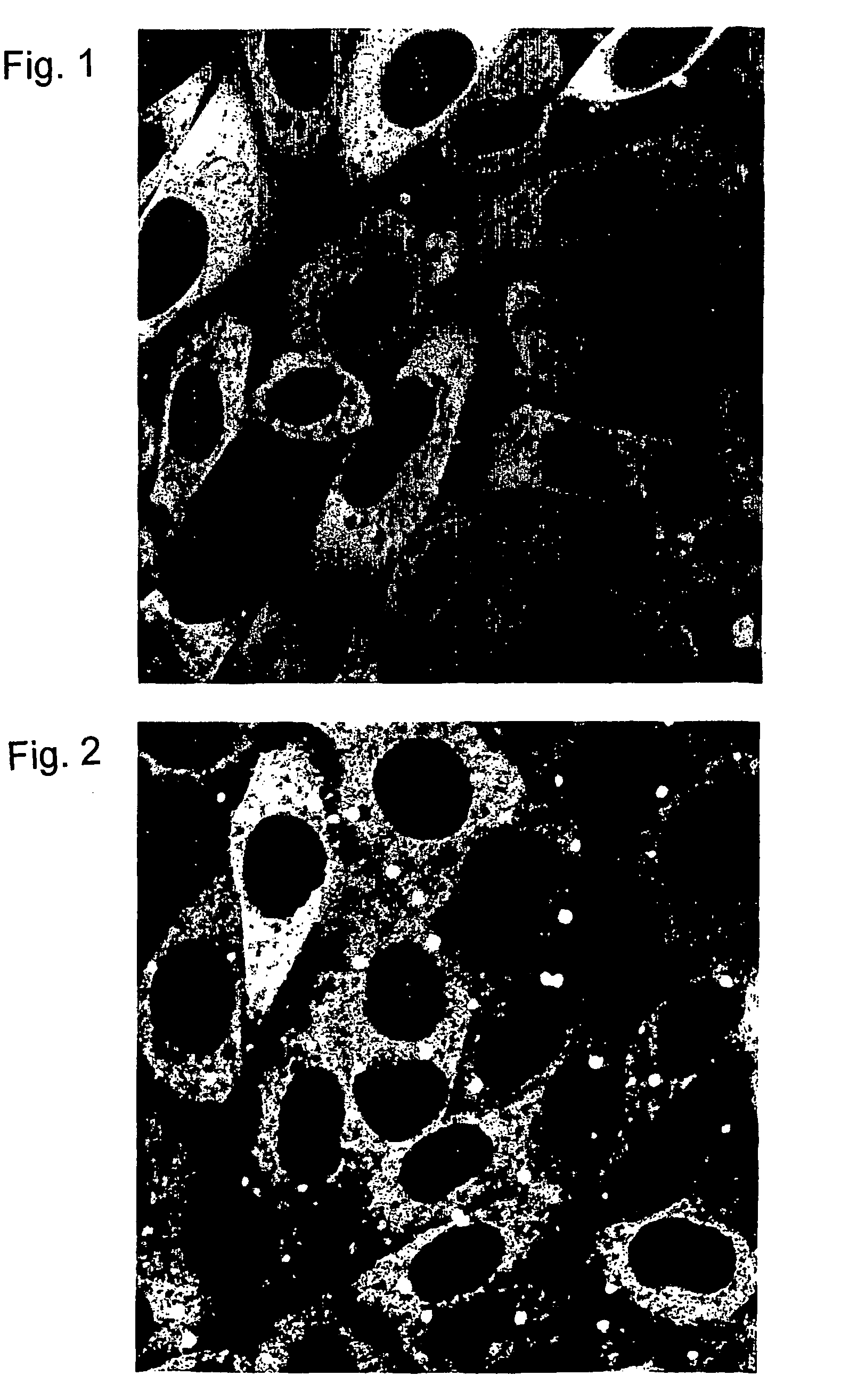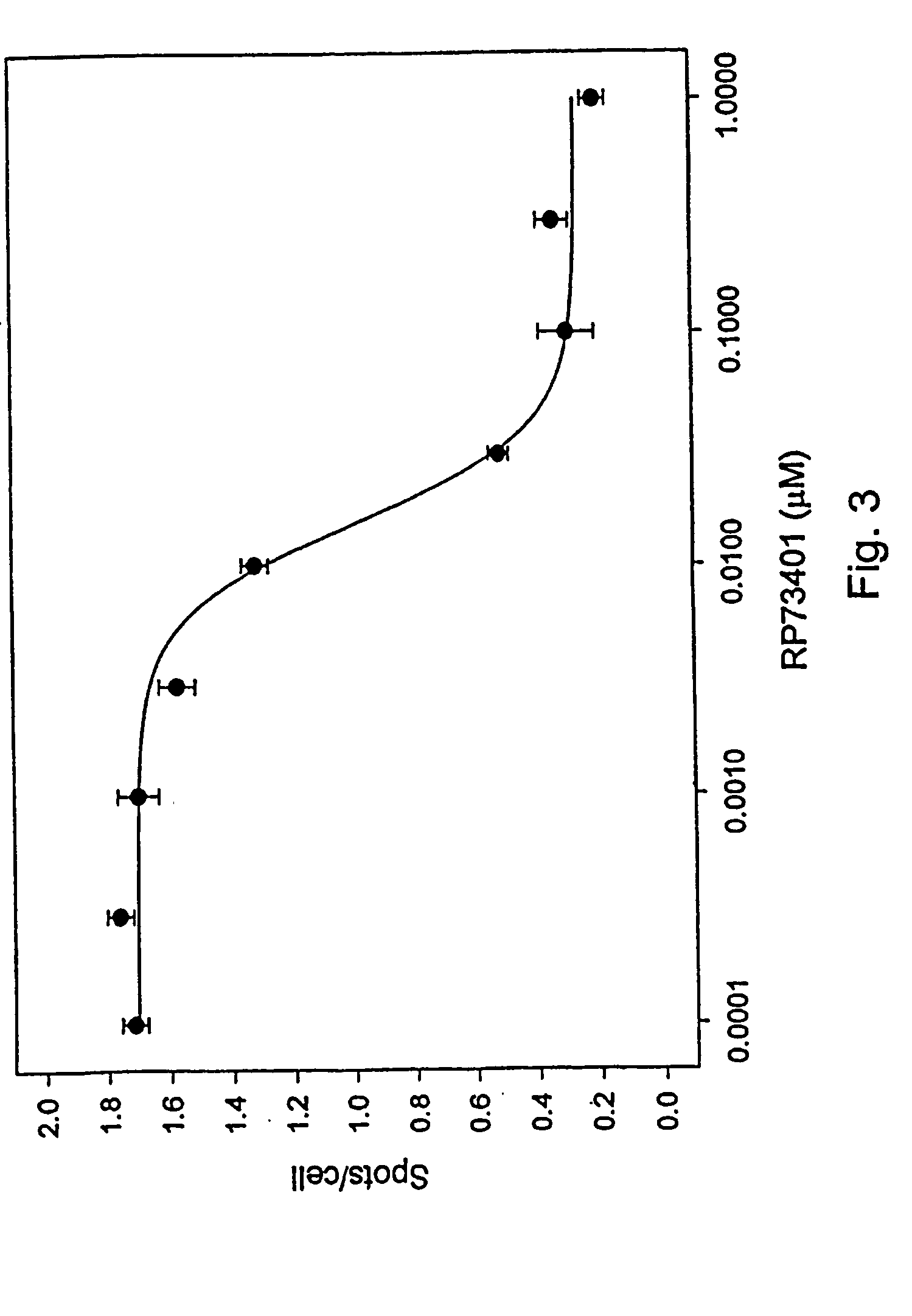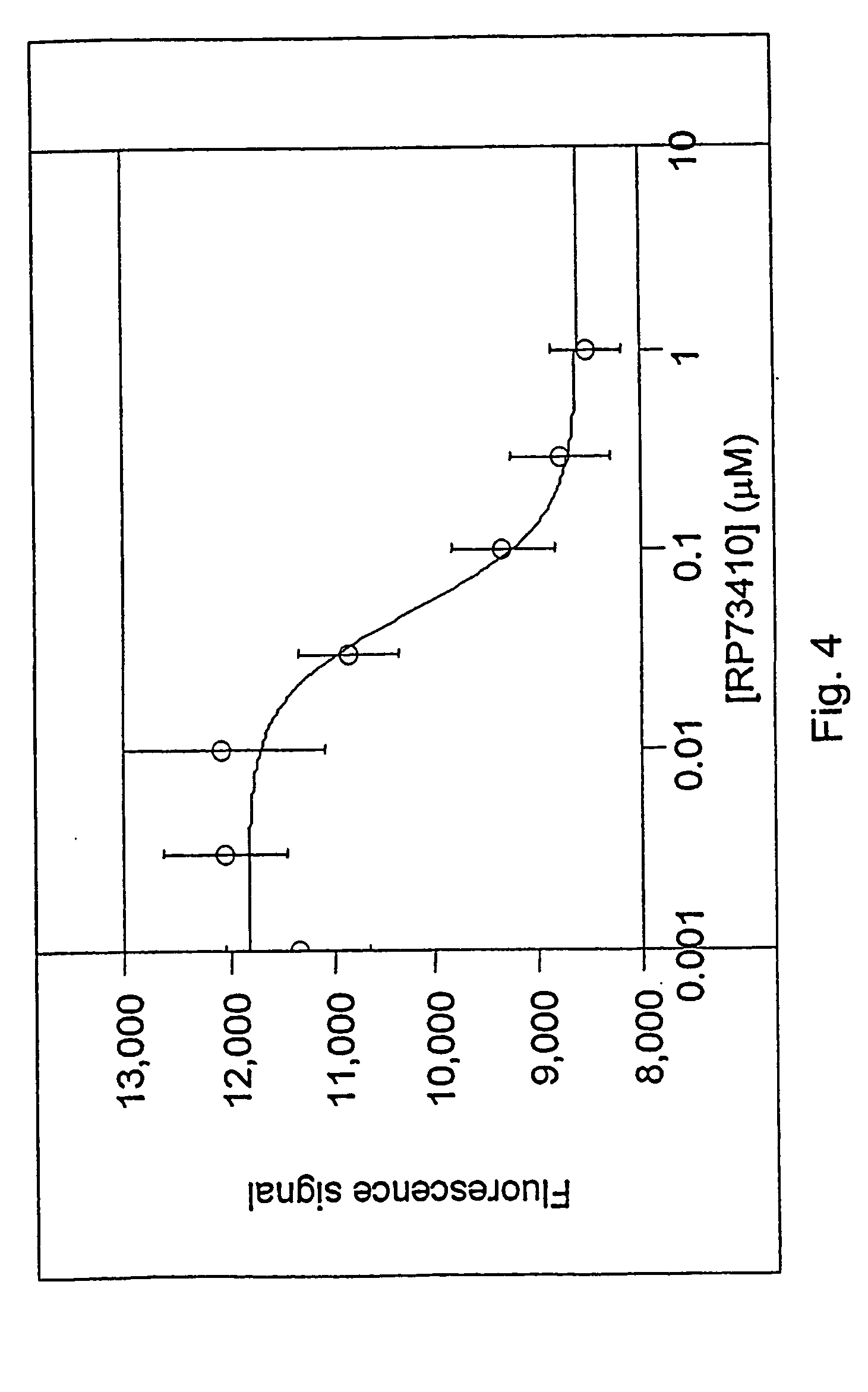Method for extracting quantitative information relating to interactions between cellular components
a technology of cellular components and quantitative information, applied in the field of measuring interactions, can solve the problems of poor specificity and damaging side effects, damage to the membrane, and difficulty in controlling the release of cellular contents by permeabilization
- Summary
- Abstract
- Description
- Claims
- Application Information
AI Technical Summary
Benefits of technology
Problems solved by technology
Method used
Image
Examples
example 1
Construction of the Probes and Fusions
[0109]PS462 contains a fusion of PDE4A4 and EGFP under the control of a CMV promoter and has resistance to G418 as selectable marker. To construct the PDE4A4-EGFP fusion, the ca. 1.9 kb C-terminal part of HSPDE4A4 (GenBank Acc. no. L20965), which is common to all PDE4A isoforms, is amplified using PCR with primers 4A-Ct-top and 4A-bottom described below. The sequence of the top primer contains a silent mutation, which introduces a Dra1 site exactly at the beginning of the shared 4A region. The bottom primer includes the common C-terminal sequence minus the stop codon, a BamH1 cloning site, and two extra nucleotides to preserve the reading frame when cloned into pEGFP-N1. The unique ca. 0.8 kb N-terminal part of HSPDE4A4 is amplified using PCR in the presence of 5% DMSO with primers 4A4-top and 4A4N-bottom described below. The top primer includes specific HSPDE4A4 sequences following the ATG, a Kozak sequence, and a Hind3 cloning site. The bottom...
example 2
Protocols and Methods
[0150]This example describes protocols and methods used for in vivo expression of the probes described in Example 1, and the visualisation and measurement of changes undergone by EGFP fusion probes, either transfected singly or as co-transfections with anchor probes in CHO cells.
Transfection and Cell Culture:
[0151]Chinese hamster ovary cells (CHO), are transfected with the plasmids described in Example 1 above, either using a single species of plasmid, or pairs of plasmids co-transfected simultaneously, using the transfection agent FuGENE™ 6 (Boehringer mannheim Corp, USA) according to the method recommended by the suppliers. Stable transfectants of single GFP probes are selected using the appropriate selection agent, usually 0.5 mg / ml G418 sulphate (Calbiochem) in the growth medium (HAM's F12 nutrient mix with Glutamax-1, 10% foetal bovine serum (FBS), 100 μg penicillin-streptomycin mixture ml−1 (GibcoBRL, supplied by Life Technologies, Denmark). Co-transfected...
example 3
Probes for Proteins X and Y with PDE4A4 Anchor Protein
[0163]The present example and Example 4, Example 5 and Example 6, describe generic ways to produce a cell line suitable for screening compounds targeting against a specific interaction between two partner components X and Y. In these examples the cells are derived from CHO cells co-transfected with two plasmids, one coding for fusion probes with X or Y attached to either the C or N terminal of the anchor moiety (the anchor probe), and the second with the other partner, Y or X, attached to either the C or N terminal of GFP (the detectable probe). There are therefore 4 possible anchor probes and 4 possible detectable probes that can be made for the interacting pair X-Y, and 8 useful combinations to co-transfect. Anchor and detectable probes use different selection markers to ensure that cells under selection maintain both plasmids; for example, the anchor may confer resistance to zeocin, the detectable to neomycin. Cells that maint...
PUM
| Property | Measurement | Unit |
|---|---|---|
| Digital information | aaaaa | aaaaa |
| Composition | aaaaa | aaaaa |
| Fluorescence | aaaaa | aaaaa |
Abstract
Description
Claims
Application Information
 Login to View More
Login to View More - R&D
- Intellectual Property
- Life Sciences
- Materials
- Tech Scout
- Unparalleled Data Quality
- Higher Quality Content
- 60% Fewer Hallucinations
Browse by: Latest US Patents, China's latest patents, Technical Efficacy Thesaurus, Application Domain, Technology Topic, Popular Technical Reports.
© 2025 PatSnap. All rights reserved.Legal|Privacy policy|Modern Slavery Act Transparency Statement|Sitemap|About US| Contact US: help@patsnap.com



